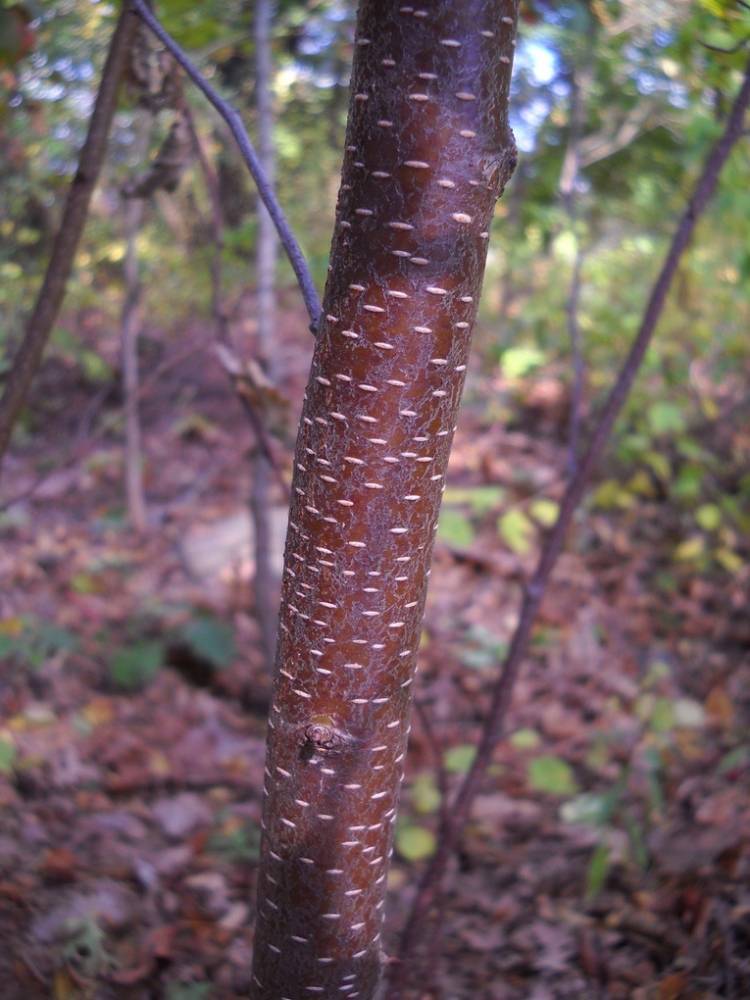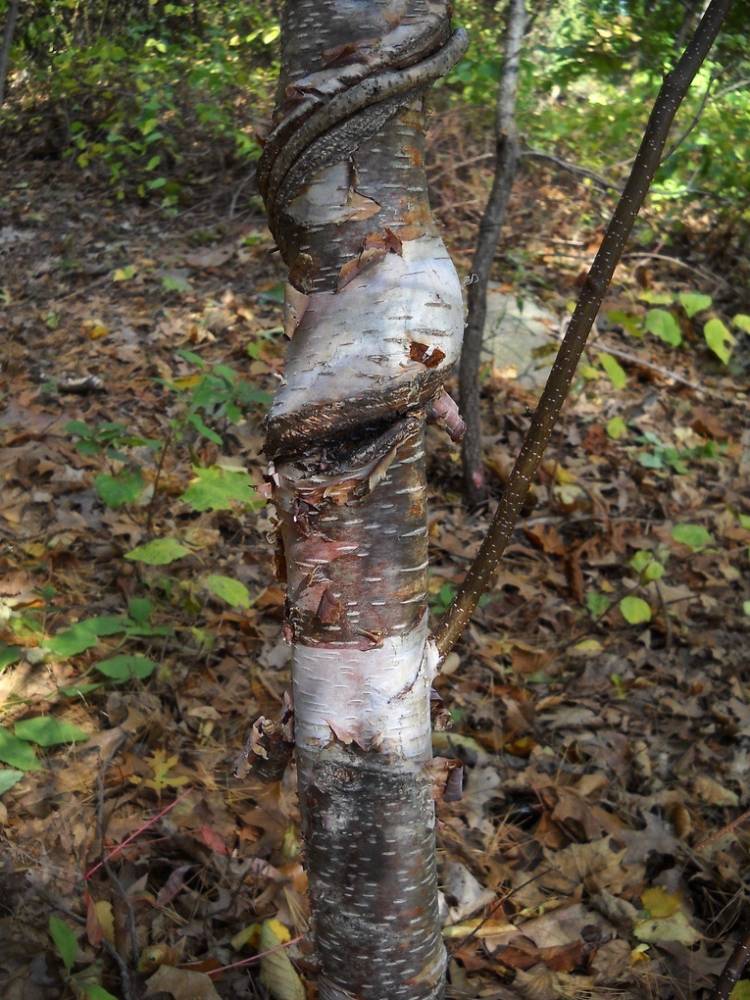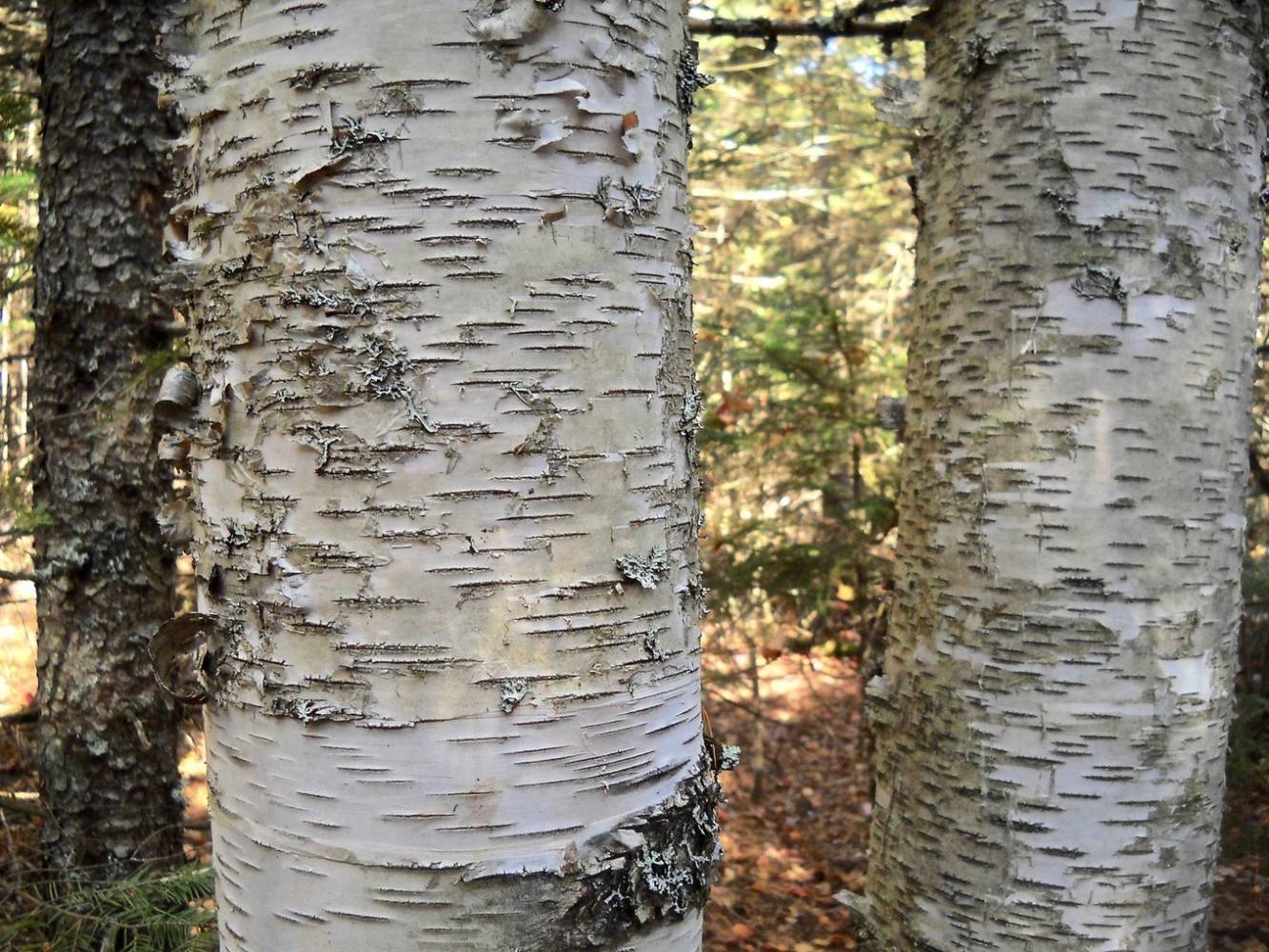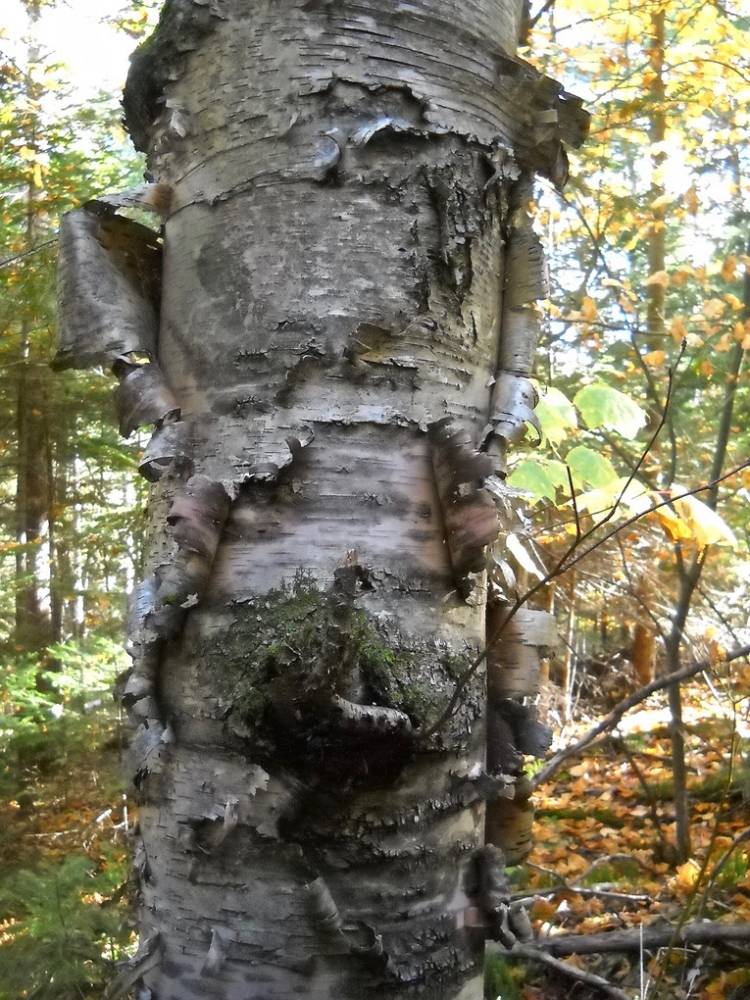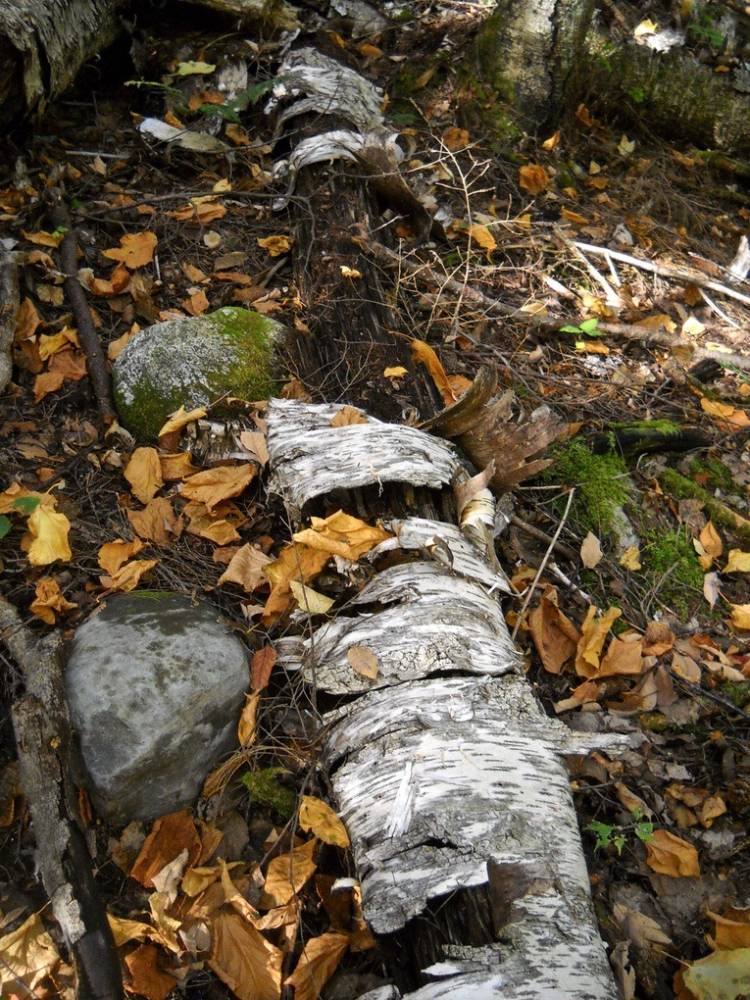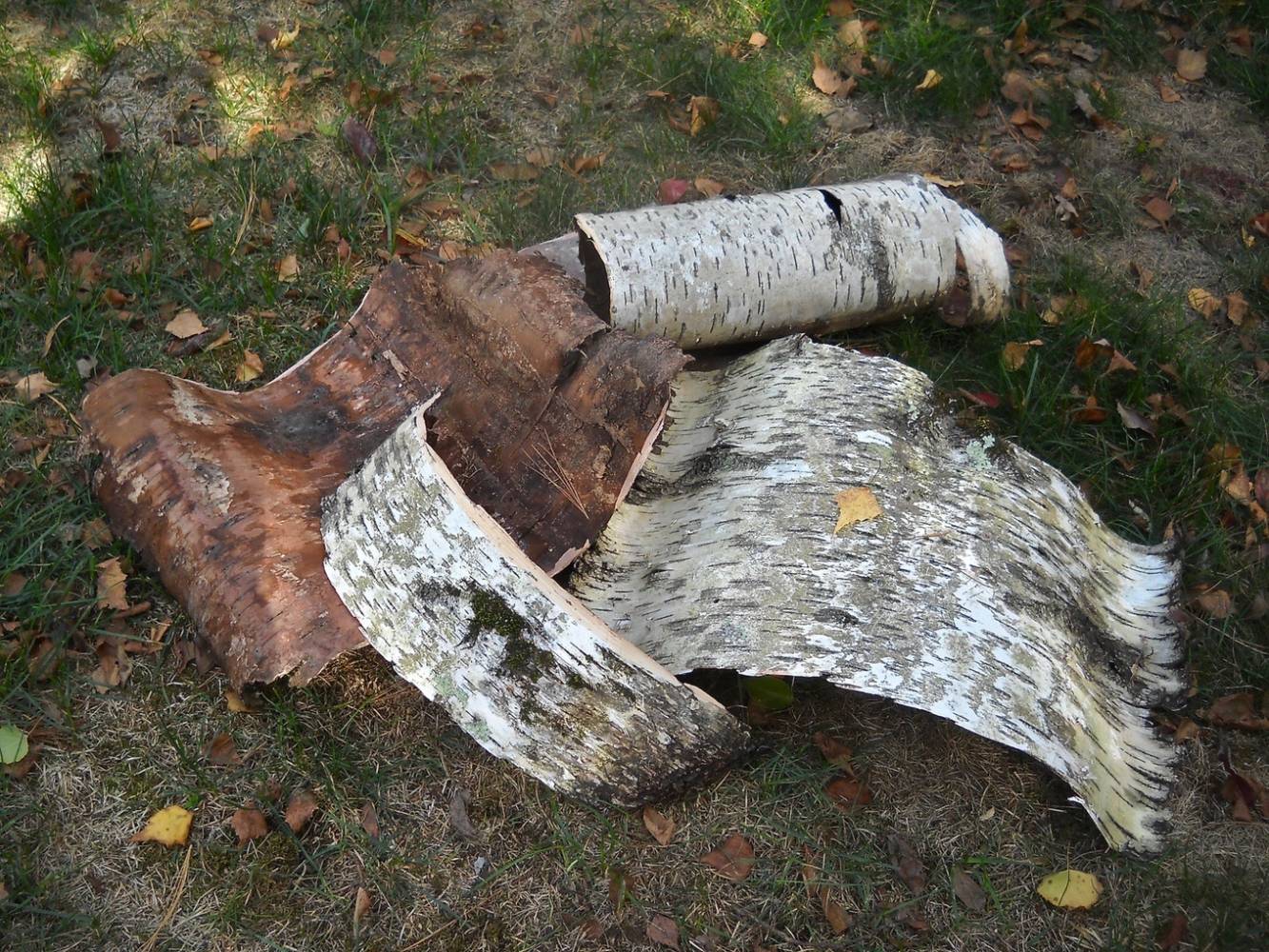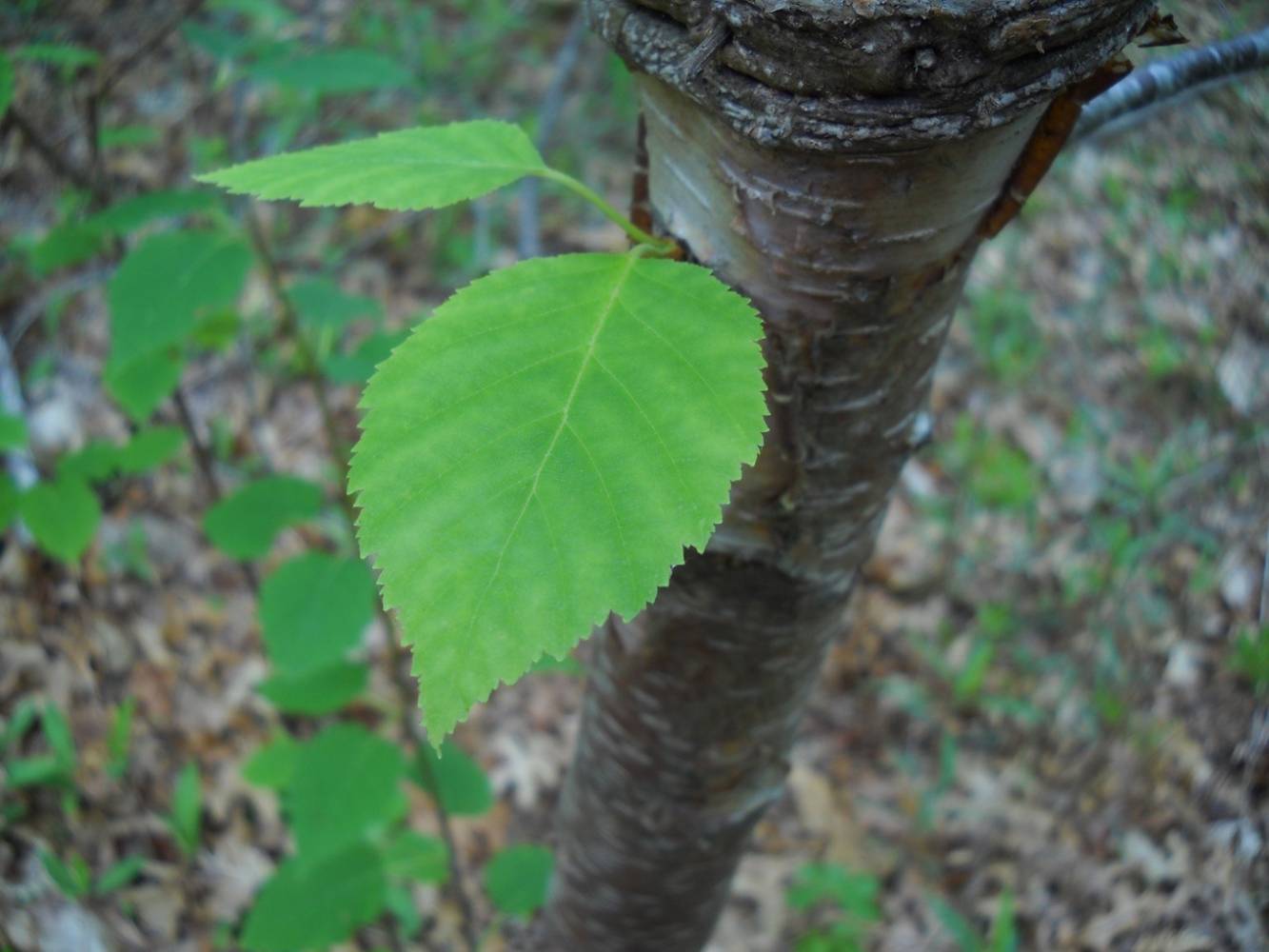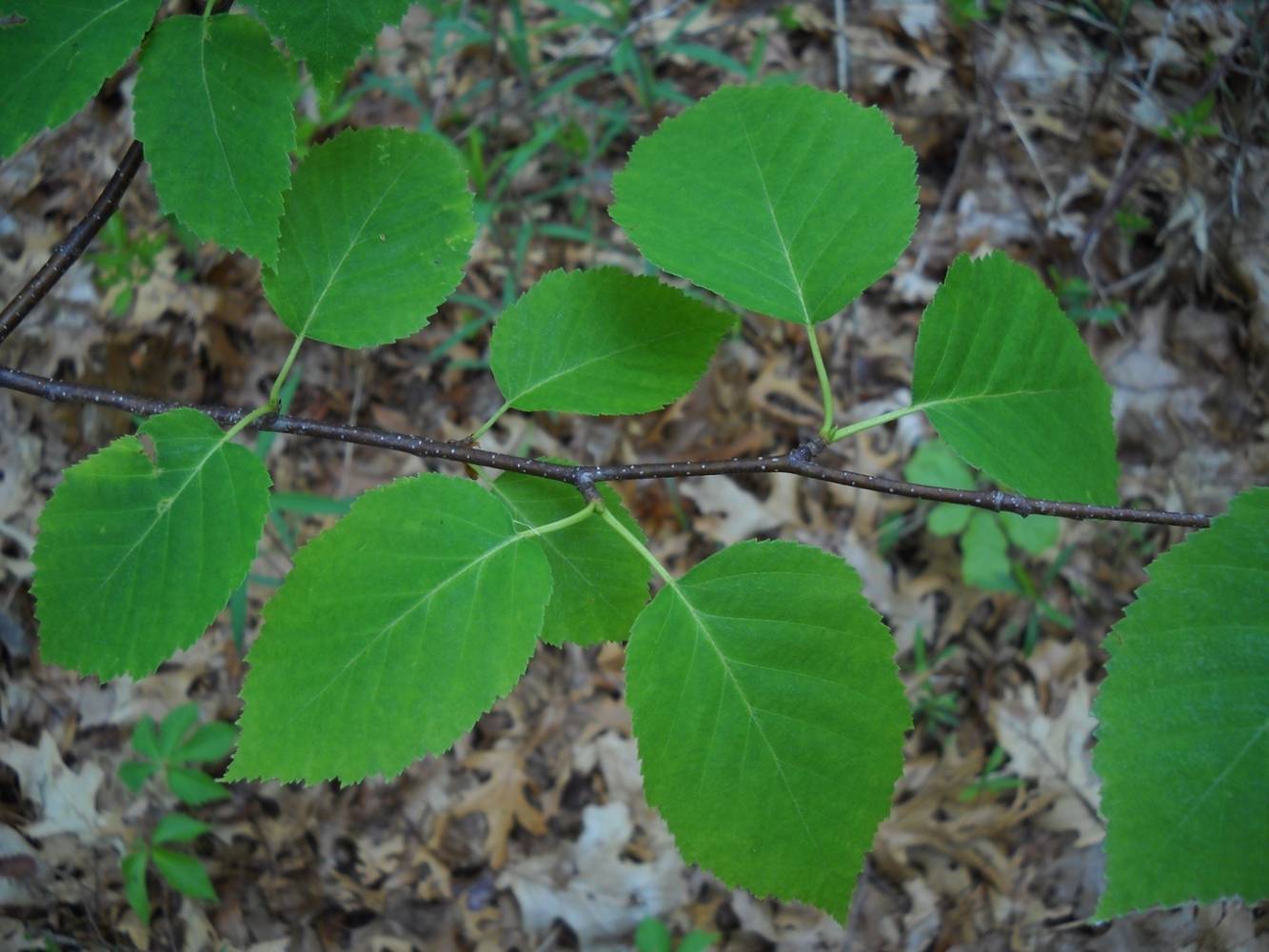paper birch
Paper birch is a pioneer tree species native to northern North America. Large stands grow in colder regions where summer temperatures do not exceed 70°F. Individuals can live to 100 years, but in warmer regions a life span of 30 years is more usual.
Unlike more mature individuals which have the characteristic peeling white bark, the only paper birch growing at Salter Grove (Station A) has a smooth and brownish red trunk indicative of individuals younger than five years. However, this individual may actually be older but has been stunted in development by Asian bittersweet vines and growing in gravelly glacial till.
Because the lightweight seeds of this species are produced in prodigious numbers and can be carried by wind for great distances, we will never know the location of the parent tree from outside the park.
Wildlife feed on different parts of the tree. Birds eat the catkins, leaf buds and seeds, and use strips of bark for nest building. Small mammals eat the seeds and large mammals browse on young twigs and leaves.
These days, paper birch bark is most commonly known by campers as a good campfire starter. Historically, it was used by Native American to make canoes, containers and the wall and roof of wigwams. Its relatively heavy white wood has been used variously in making arrows, bows, flooring, furniture, plywood, popsicle sticks, pulpwood, sleds, snowshoes, and spears. When properly seasoned, it also makes good firewood. Birch sap can be made into a syrup for the production of wine and beer or in medicinal preparations for a large variety of ailments.

